21 June 1778 Sunday
Piranesi's highly irregular intention to erase all his previously etched circus plans and then redraw them to match the plan configuration of "Caracalla" baffled the entire workshop. Laura14 and Francesco even wondered as the rightness of their father's mental state. Yet Piranesi simply explained how the earlier circus plans proved to be discreditable and must be corrected posthaste. The copper plate areas needing erasure were not terribly large, 24 square inches at most, but the minute and fine nature of the existing line work required a continued, fully concentrated removal effort--a task falling to Piranesi and Laura, she doing the scrapping and he right beside her doing the burnishing, while Francesco carries out further field survey work gathering data to facilitate the imminent corrected circus plan designs. A wholly unanticipated "ancient circuses" publishing project is now underway.

Facsimile representation of the Circus Maximus plan (3 13/16" x 11") within the 'Pianta dell antico Foro Romano' copper plate before the 1778 scraping and burnishing erasure.

Facsimile representation of the Circus Hadriani plan (2 7/16" x 8 3/16") within the 'Ichnographia Campus Martius' copper plate before the 1778 scraping and burnishing erasure.
14. Laura Piranesi, the eldest of Piranesi's five children, turned 24 years of age in 1778. The nimbleness of Laura's confident etching abilities impressed Piranesi to no end. The summer of 1778 turned out to be a time of special bonding between Laura and her father, and Piranesi was a very proud father of Laura.
1789
Descrizione dei circhi, particolarmente di quello di Caracalla e dei giochi in esso celebrati
Description of circuses, particularly that of Caracalla and the divine games celebrated in it
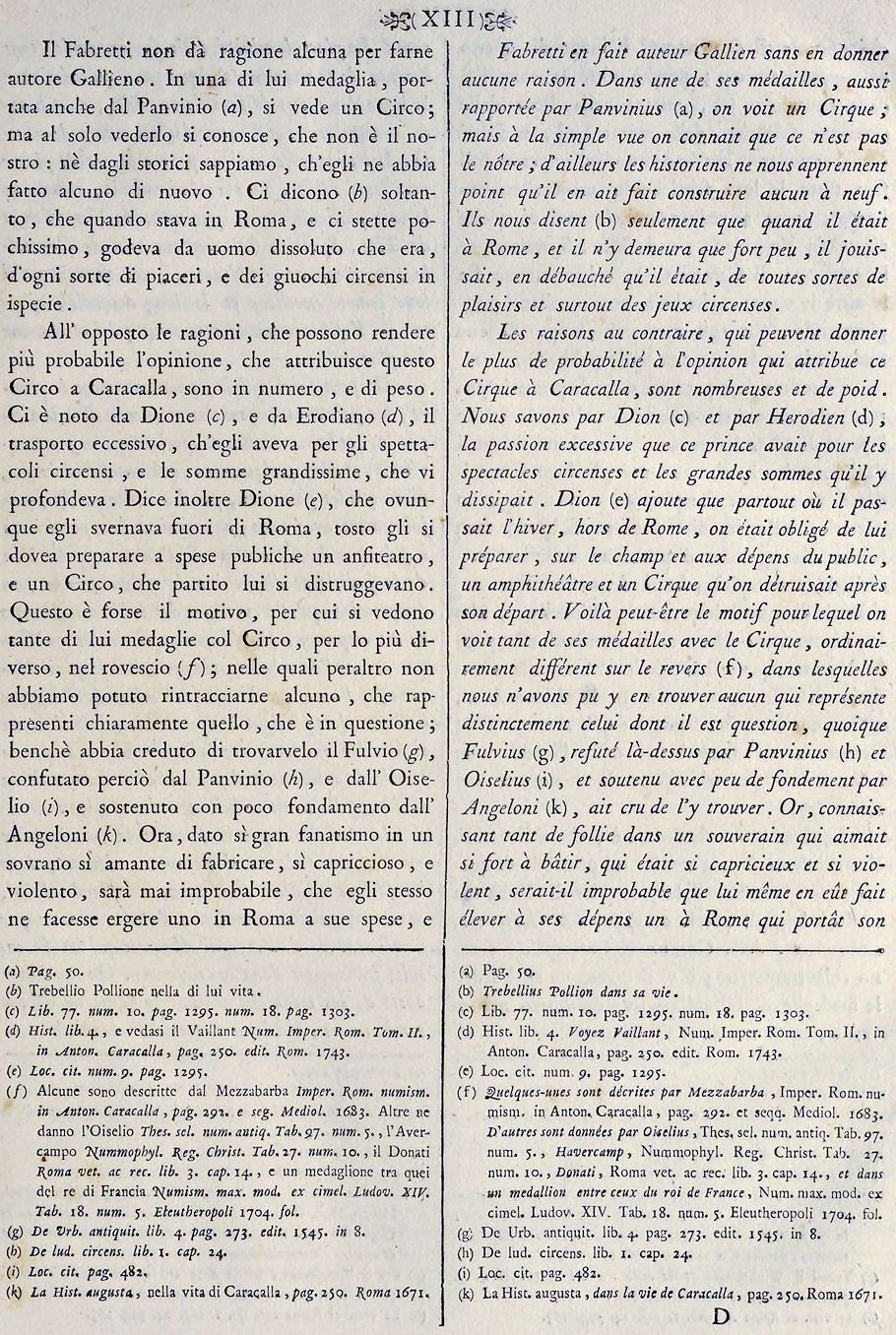
Fabretti does not give any reason to make Gallienus its author. In one of his medals, also worn by Panvinio (a), we see a circus; but by only seeing it we know that it is not ours: nor do we know from the scorers that he has made any new one. They only tell us (b) that when he was in Rome, and he stayed there very little, like the dissolute man he was, he enjoyed all sorts of pleasures, and especially circus games.
On the contrary, the reasons which can make the opinion which attributes this Circus to Caracalla more probable are in number and weight. We know from Dione (c), and from Herodian (d), the excessive enthusiasm he had for circus shows, and the very large sums he lavished on them. Dione also says (e), that wherever he wintered outside Rome, an amphitheater and a circus had to be prepared for him at public expense, which were destroyed when he left. This is perhaps the reason why we see many of his medals with the Circus, mostly different, on the reverse (f); in which, moreover, we have not been able to trace any, which clearly represents what is in question; although Fulvio (g) believed he found it there, refuted therefore by Panvinio (h), and by Oiselio (i), and supported with little foundation by Angeloni (k). Now, given such great fanaticism in a sovereign so fond of building, so capricious and violent, will it ever be improbable that he himself had one erected in Rome at his own expense, and that it bore his name? The place for this was very opportune; because beyond the convenience of the situation (a), it remained in the line of its other buildings, that is, the baths, and other buildings around it. It was the custom of the emperors to make all their buildings in a specific place, as can be seen mainly from those raised by Vespasian and Titus. Sparziano confirms this of Caracalla (b), by naming the baths among others, which he praises as excellent; adding, that he arranged a street along them, and made it one of the most beautiful.
32 y.o. Francesco Piranesi 1 August 1790
Raccolta de'Tempj antichi, Vol. II.
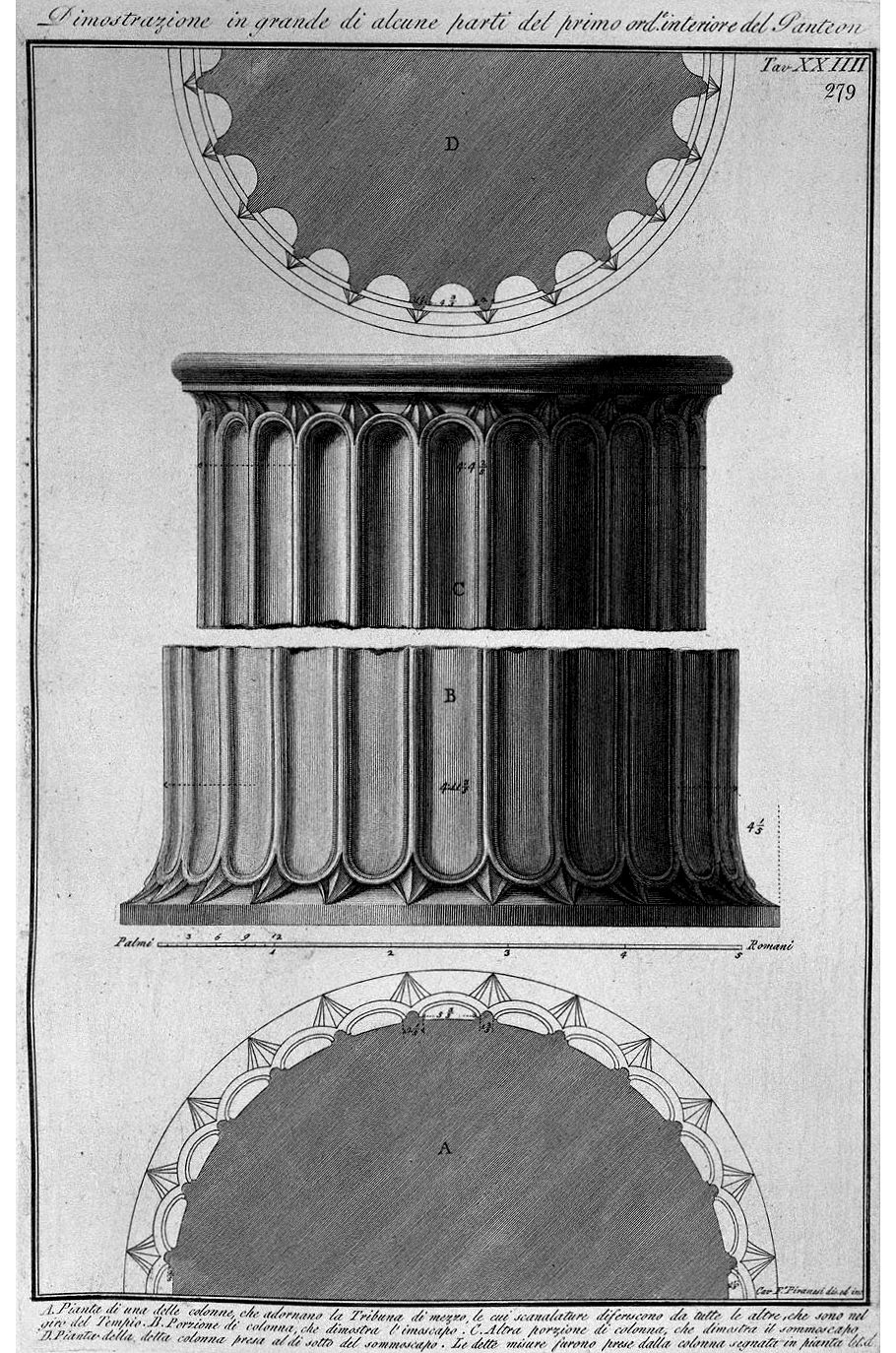
Large demonstration of some parts of the first internal order of the Pantheon
A. Plan of one of the columns, which adorn the middle Tribune, whose grooves differ from all the others, which are around the Temple. B. Portion of column, demonstrating the imoscapo. C. Another portion of the column, showing the sommoscapo D. Plan of the said column taken below the sommoscapo. The said measurements were taken from the column marked in plan let.d
Cav. Francesco Piranesi drawn and engraved
21 June 1812 Sunday
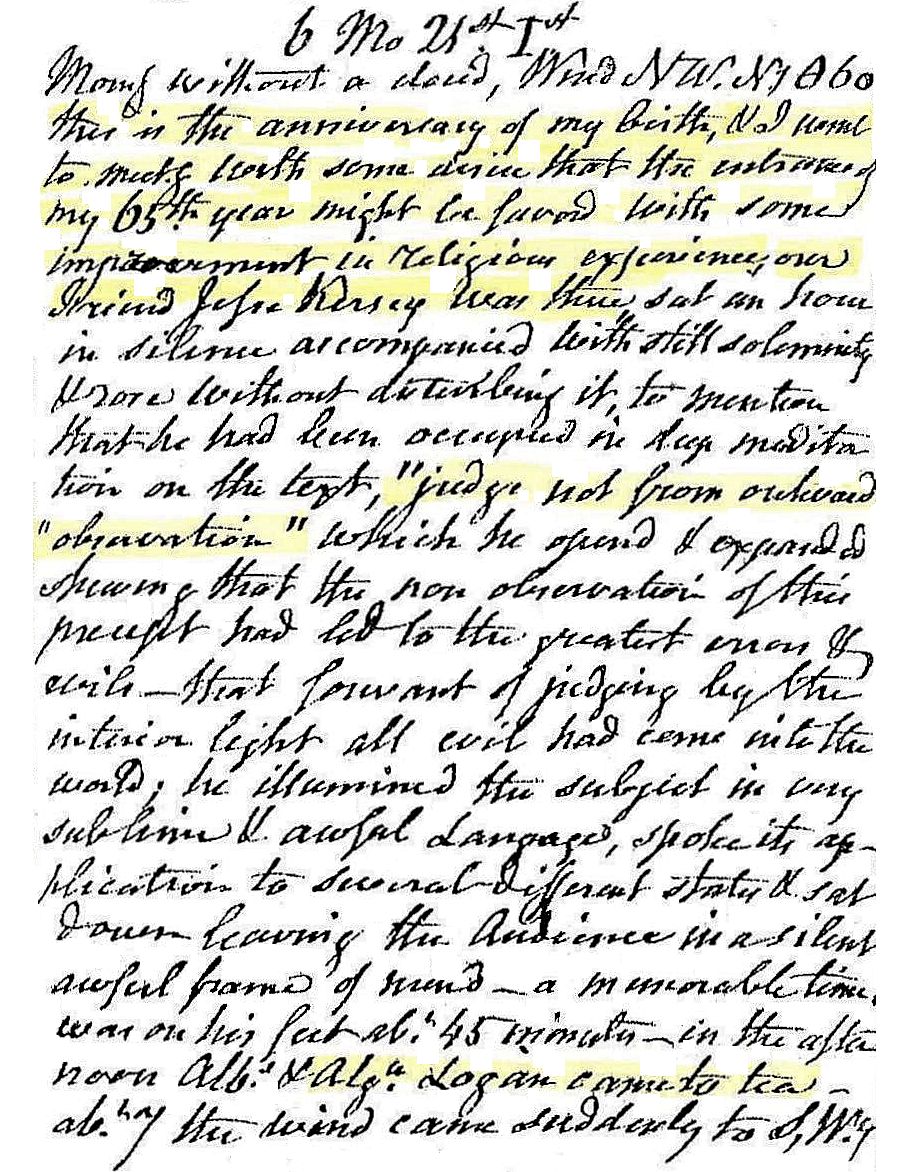
Morning without a cloud, wind NW Nerly, temperature 60. This is the anniversary of my birth and I went to Meeting with some desire that the entrance of my 65th year might be favored with some improvement in religious experience. Friend Jesse Kersey was there, sat an hour in silence accompanied with still solemnity and rose without disturbing it, to mention that he had been occupied with deep meditation on the text, "Judge not from outward observations," which he opened and expanded showing that the non-observation of this precept had led to the greatest errors and evil--that .......[?] of judging by the interior light all evil had come into the world; he illuminated the subject in very sublime and awful language, spoke its application to several different states and sat down leaving the audience in a silent awful frame of mind--a memorable time, was on his feet about 45 minutes. Alb. and Algernon Logan came to tea. About 7 the wind came suddenly to SWerly.
21 June 1952 Saturday
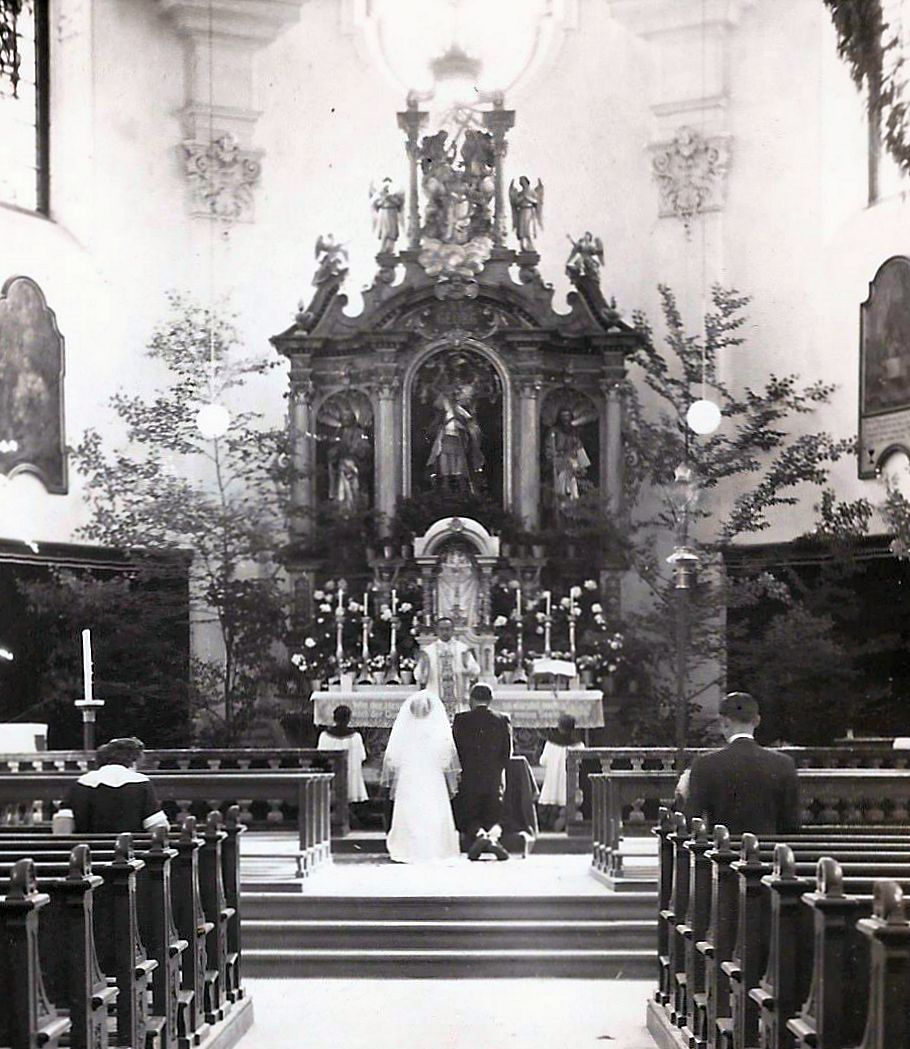
21 June 2003
Re: acronyms: 20th c. i be lazy thinker syndrome becomes commerce
How come the central characters of creation myths are often brothers metabolic?
21 June 2020
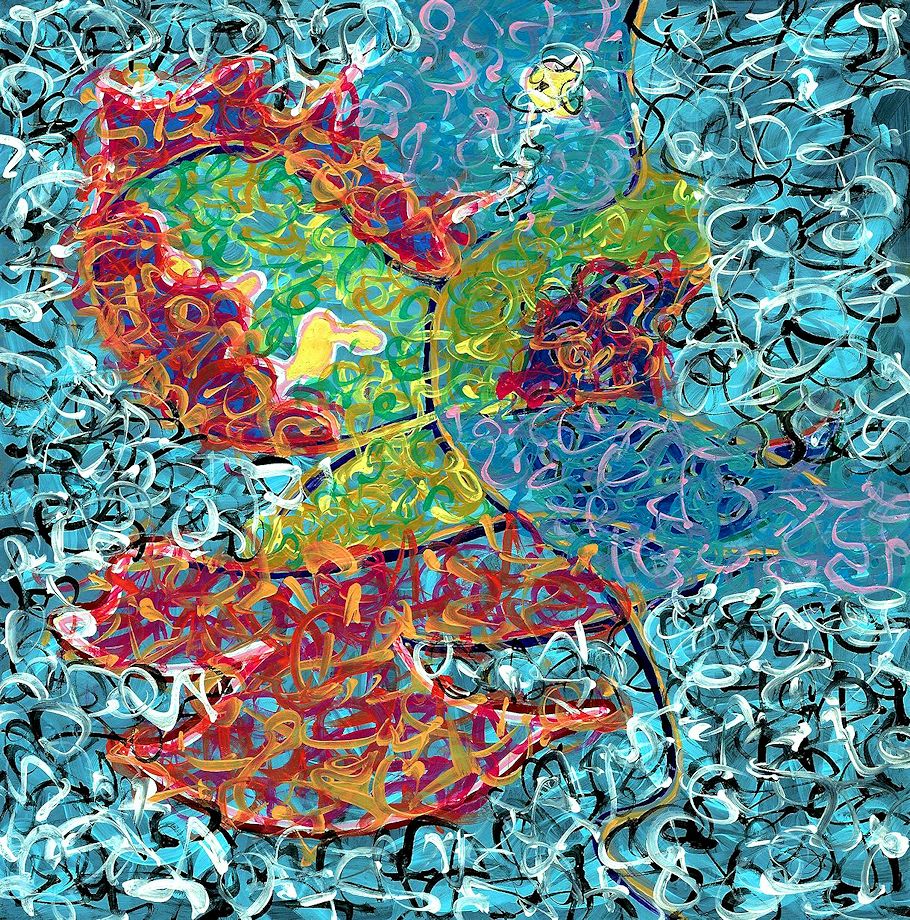
Mary Boone's 180 hours of community service hours 112 113
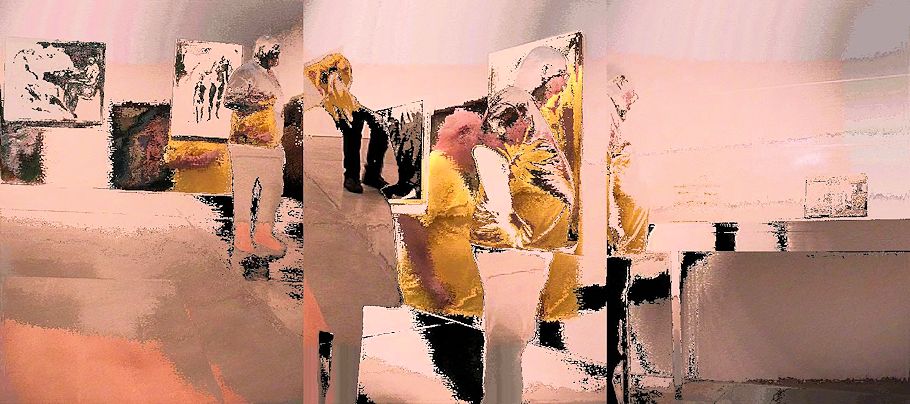
Virtual Painting 543
21 June 2023 Wednesday
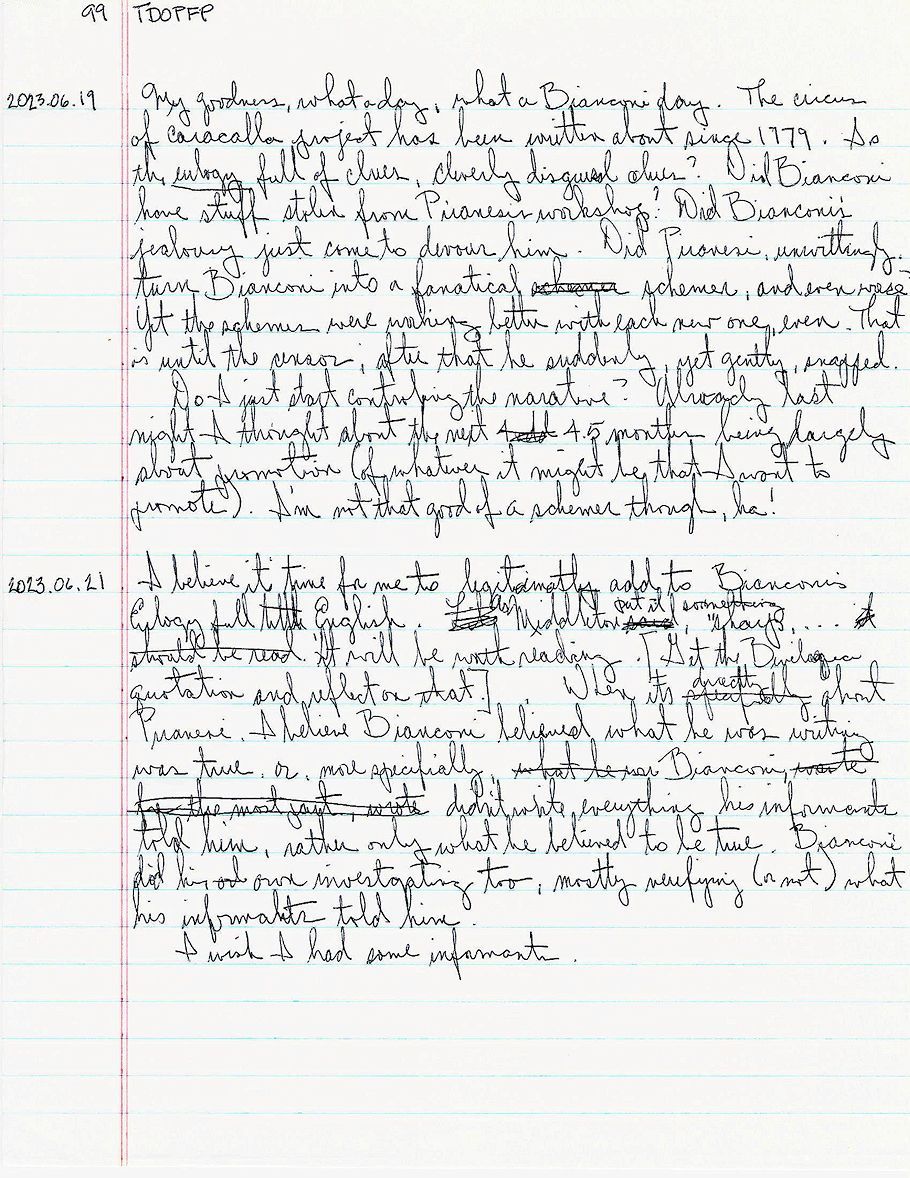
|